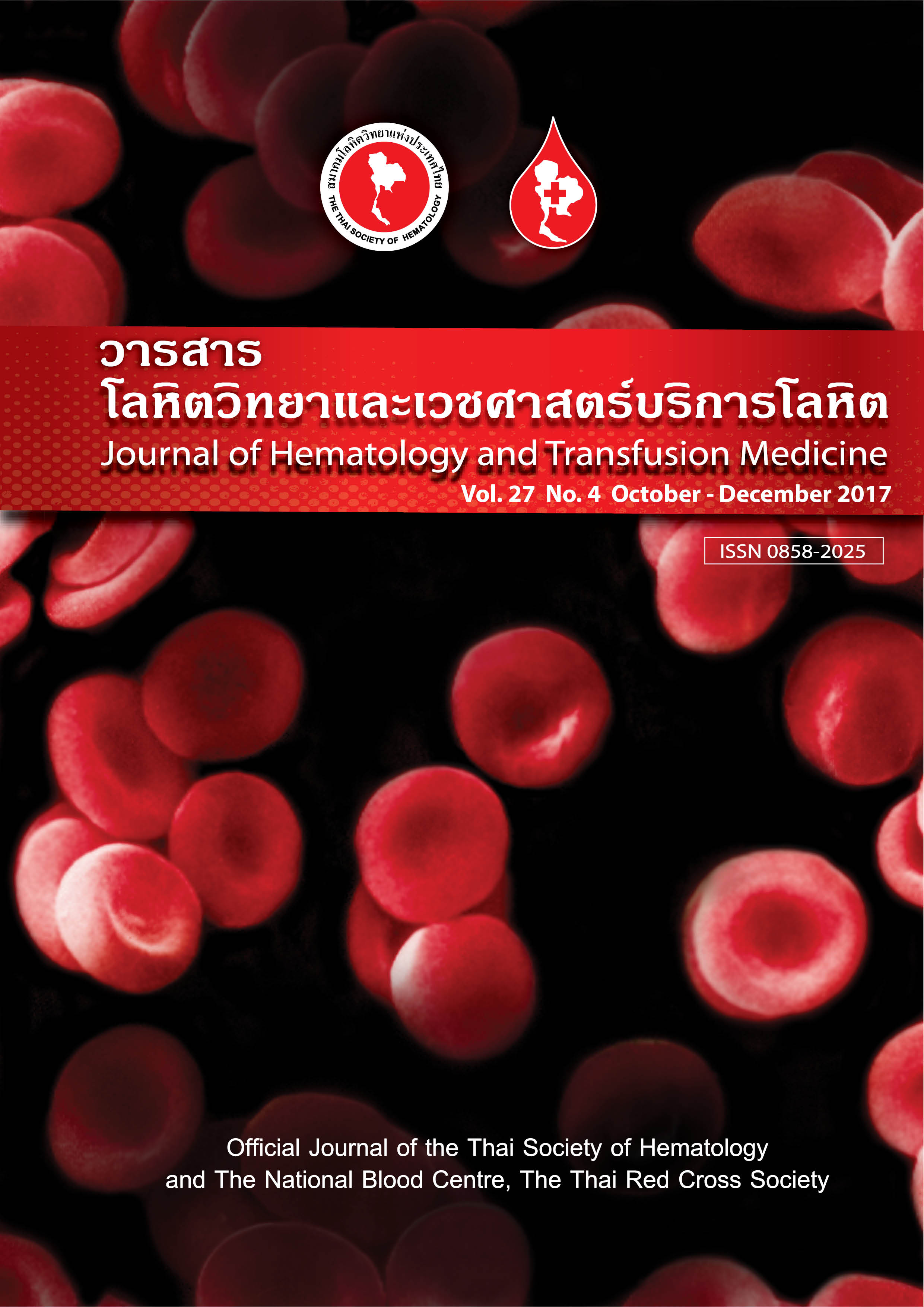Shorter Overall Survival in Non-Germinal Center Diffuse Large B Cell Lymphoma Based on Hans Criteria in Thai Patients
คำสำคัญ:
Diffuse large B-cell lymphoma, Prognosis, Cell of originบทคัดย่อ
Background: Diffuse large B-cell lymphoma (DLBCL) is the most common lymphoma type in Thailand. Gene
expression profiling (GEP) can classify DLBCL by the cell of origin in the germinal center B-cell (GCB) and non-
GCB subtypes that differ in prognosis and may lead to different therapy. Nevertheless, GEP is not generally
available. Hans et al. has developed a simple and inexpensive immunohistochemistry algorithm that can reliably categorize DLBCL. However, the validation data are still conflicting and no study has been conducted in Thailand.
Objective: To compare the overall survival (OS) time of patients who were diagnosed as DLBCL of GCB
vs. non-GCB subgroups as classified by immunohistochemistry.
Methods: This study employed a retrospective
cohort design. Patients with newly diagnosed cases of DLBCL, aged ≥ 18 years, who had adequate remaining
tissue pathology for further study from January 2009 to September 2015, were enrolled. Patients with transformed lymphoma, HIV-associated lymphoma, primary mediastinal B-cell lymphoma, primary CNS lymphoma and primary effusion lymphoma were excluded. All were treated by doxorubicin-based chemotherapy. The paraffinembedded tissue was immunohistochemically stained to determine the cell of origin using Hans’ criteria. Demographic data were recorded. All patients were followed for clinical outcome. The Kaplan-Meier method was used to estimate overall and event-free survival distributions.
Result: One hundred nineteen patients with DLBCL were investigated. The mean age was 56 ± 14 years with a median follow-up of 29 months. The median OS time for the non-GCB group was 37 months compared with unattained outcome for the GCB group [Hazard ratio (HR) 2.23, 95% confidence interval (CI): 1.10-4.52, p = 0.013]. The 3-year OS for the non-GCB was 49% compared with 74% for the GCB group (p = 0.02, log rank test). Using multivariate analysis, 4 factors were significantly associated with poor OS, i.e., high serum LDH (adjusted HR 2.40, 95%CI: 1.04-5.52, p = 0.04), stage 3-4 (adjusted HR 2.28, 95%CI: 1.06-4.88, p = 0.034), chemotherapy without rituximab (adjusted HR 3.21, 95%CI: 1.71-6.03, p < 0.001) and the non-GCB subtype (adjusted HR 2.08, 95%CI: 1.02-4.27, p = 0.045).
Conclusion: The non-GCB subgroup determined using Hans’ criteria was independently associated with shorter OS among Thai patients with DLBCL.



